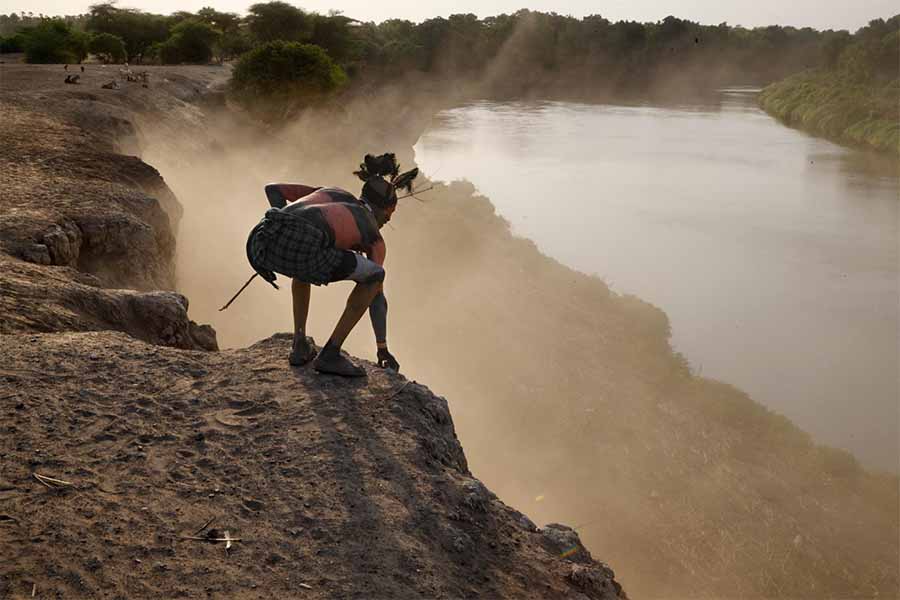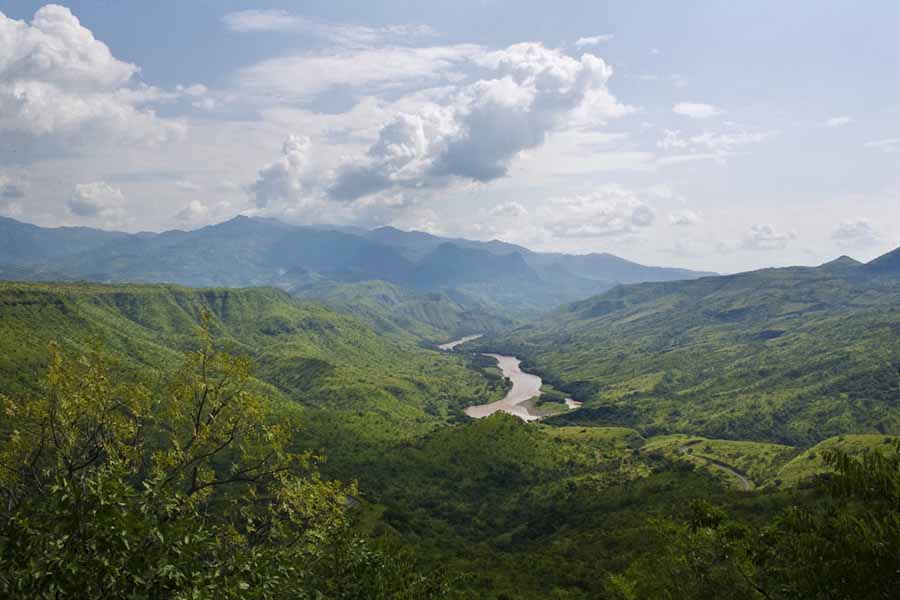Lower Valley of the Omo
The Lower Valley of the Omo is located in south-western Ethiopia. It extends over an area of 165 km2. The age old sedimentary deposits in the Lower Omo Valley are now world renowned for the discovery of many hominid fossils, that have been of fundamental importance in the study of human evolution. Omo Valley River.
The Lower Omo Valley includes the Konso and Fejej paleontological research locations with sedimentary deposit going back to the plio-pleistocene period. These have produced numerous hominid and animal fossils, including fragments of Australopithecus. The deposits of human vertebrae fauna, and paleo-environmental evolution, shed light on the earliest stages of the origins and development of Homo sapiens of Africa. The discoveries of ancient stone tools in an encampment also offers evidence of the oldest known technical activities of prehistoric beings, thus making the property one of the most significant for mankind.
To ensure Omo’s position as the yardstick against which all other ancient deposits in East Africa are measured, researched evidence from the site has established bio-stratigraphical, radiometric and magneto-stratigraphical scales spanning between one and 3.5 million years. Since 1966, scientific research has proved that the site significantly contributes to prominent archaeological, geological, paleo-anthropological and paleo-environmental studies.
The hominid remains that have been excavated in the Lower Valley of the Omo are characteristic of a unique type. They bear exceptional witness to important developments in the field of cultural development.
The south-west of Ethiopia is a region rich in wildlife resources, with three major national parks. Distinctly different from other parts of Ethiopia, it offers a mixture of fertile grasslands, terraced hillsides, broad rivers and forests. The National Park in which the hominid remains have been found is one of the most beautiful in Ethiopia. Its 4,068 km2 of wilderness bordered by the Omo River is home to an amazing range of wildlife: 306 species of bird have been identified here, while large herds of eland, buffalo and elephant are not uncommon.
The Lower Valley of the Omo is unlike any other place on Earth in that so many different types of people have inhabited such a small area of land over many millennia. It is believed that it was the crossroads of a wide assortment of cultures where early humans of many different ethnicities passed as they migrated to and from lands in every direction. As a result the Lower Valley of the Omo, which is a prehistoric site near Lake Turkana, is renowned the world over.
The discovery of many fossils there, especially of Homo gracilis, has been of fundamental importance in the study of human evolution. The site is well documented owing to the research undertaken during the 1930s by Professor Camille Aramburg and from 1968 to 1976 by a team of palaeontologists and prehistorians. The discoveries of humanoid fossils in the valley include jaw bones, quantities of detached teeth, and fragments of australopithecines. Furthermore, evidence of the oldest-known humanoid technological activity has been found in this region, as well as stone objects attesting to an encampment of prehistoric human beings that is among the oldest known today.
The Lower Omo Valley includes the Konso and Fejej paleontological research locations with sedimentary deposit going back to the plio-pleistocene period. These have produced numerous hominid and animal fossils, including fragments of Australopithecus. The deposits of human vertebrae fauna, and paleo-environmental evolution, shed light on the earliest stages of the origins and development of Homo sapiens of Africa. The discoveries of ancient stone tools in an encampment also offers evidence of the oldest known technical activities of prehistoric beings, thus making the property one of the most significant for mankind.
To ensure Omo’s position as the yardstick against which all other ancient deposits in East Africa are measured, researched evidence from the site has established bio-stratigraphical, radiometric and magneto-stratigraphical scales spanning between one and 3.5 million years. Since 1966, scientific research has proved that the site significantly contributes to prominent archaeological, geological, paleo-anthropological and paleo-environmental studies.
The hominid remains that have been excavated in the Lower Valley of the Omo are characteristic of a unique type. They bear exceptional witness to important developments in the field of cultural development.
The south-west of Ethiopia is a region rich in wildlife resources, with three major national parks. Distinctly different from other parts of Ethiopia, it offers a mixture of fertile grasslands, terraced hillsides, broad rivers and forests. The National Park in which the hominid remains have been found is one of the most beautiful in Ethiopia. Its 4,068 km2 of wilderness bordered by the Omo River is home to an amazing range of wildlife: 306 species of bird have been identified here, while large herds of eland, buffalo and elephant are not uncommon.
The Lower Valley of the Omo is unlike any other place on Earth in that so many different types of people have inhabited such a small area of land over many millennia. It is believed that it was the crossroads of a wide assortment of cultures where early humans of many different ethnicities passed as they migrated to and from lands in every direction. As a result the Lower Valley of the Omo, which is a prehistoric site near Lake Turkana, is renowned the world over.
The discovery of many fossils there, especially of Homo gracilis, has been of fundamental importance in the study of human evolution. The site is well documented owing to the research undertaken during the 1930s by Professor Camille Aramburg and from 1968 to 1976 by a team of palaeontologists and prehistorians. The discoveries of humanoid fossils in the valley include jaw bones, quantities of detached teeth, and fragments of australopithecines. Furthermore, evidence of the oldest-known humanoid technological activity has been found in this region, as well as stone objects attesting to an encampment of prehistoric human beings that is among the oldest known today.
SELECTED PACKAGE
30 November -0001
5 Days Danakil Depression
30 November -0001
5 Days Trek In Bale Mountains
30 November -0001
8 Days Timkat Fastival
30 November -0001
28 Days Complete Ethiopia
CUSTOMIZED AND TAILOR-MADE TOUR PACKAGES
BACK TO THE ORIGIN








